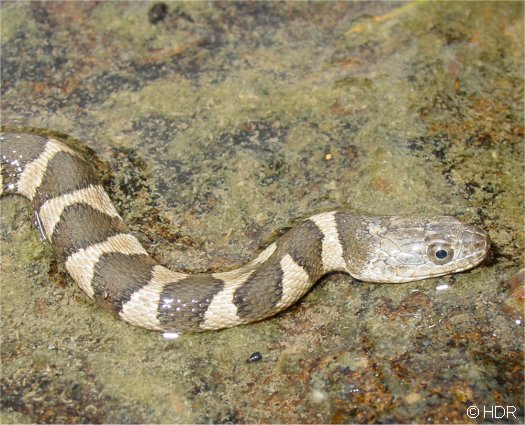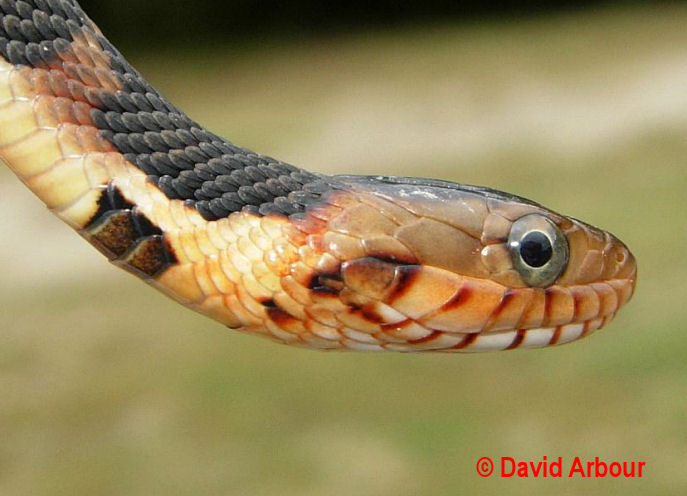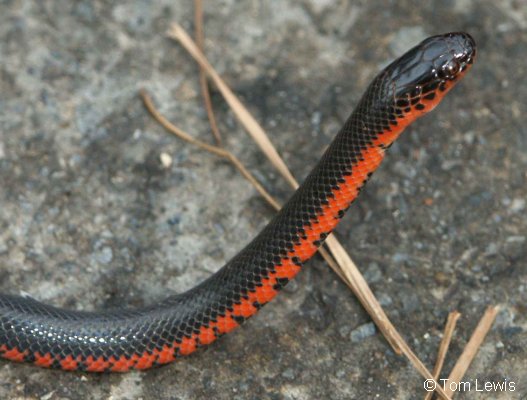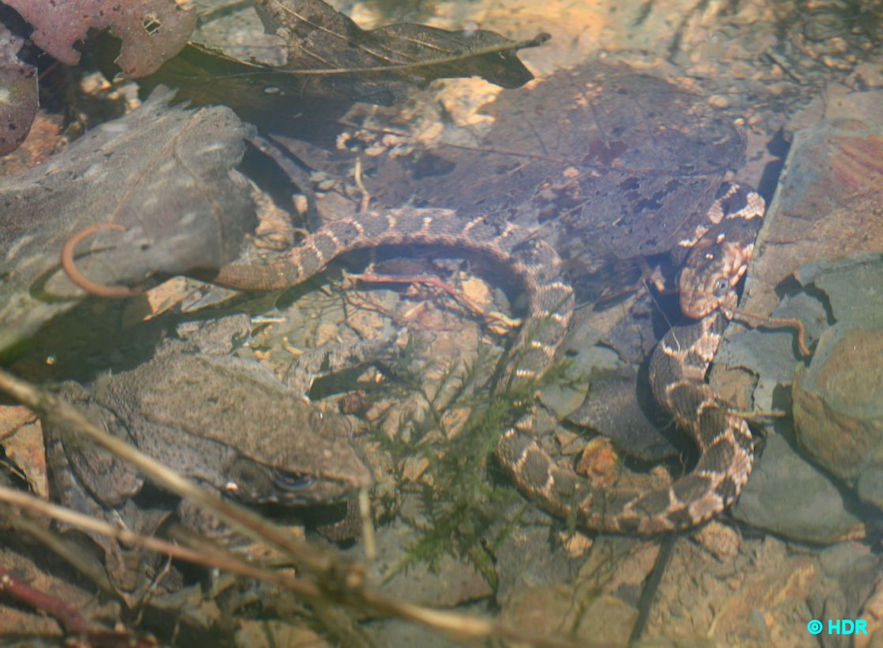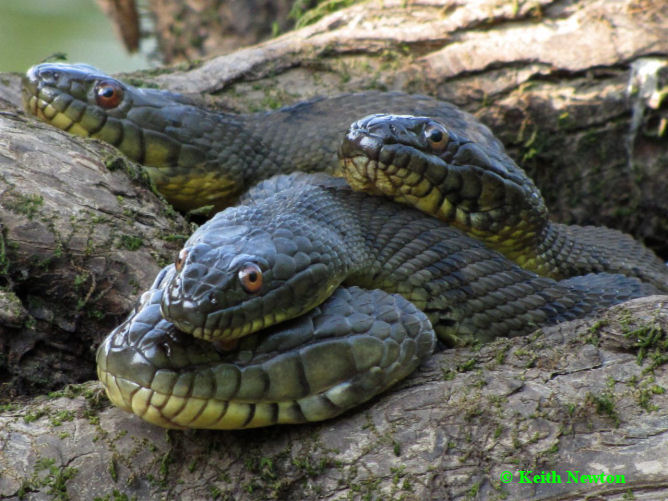|
|
|
The Northern Water Snake, Nerodia sipedon sipedon, is a common creek runner in Arkansas. This shot was flashed to show the true cream and chocolate color. They appear darker when wet and in shadow but the bands still show. They are generally docile. Some might confuse them with the venomous Copperhead but they are much less colorful. And the round pupil and absence of a pit, as always, when this close, defines a non-venomous serpent. |
|
|
|
The Broad-banded Water Snake, Nerodia fasciata confluens, is often mistaken for a Cottonmouth by the hunter or fisherman describing their close encounter with death. Again the pupil and pitless state is easier to see than most think. These guys have broad dark stretches interspersed with orange, yellow and brown irregularities. The face is often as pictured here with orange and red cheeks. Less docile than the above, they can be nasty initially when encountered but like most snakes they just want to go their way. This species is found all over Arkansas except in the Ozark plateau. |
